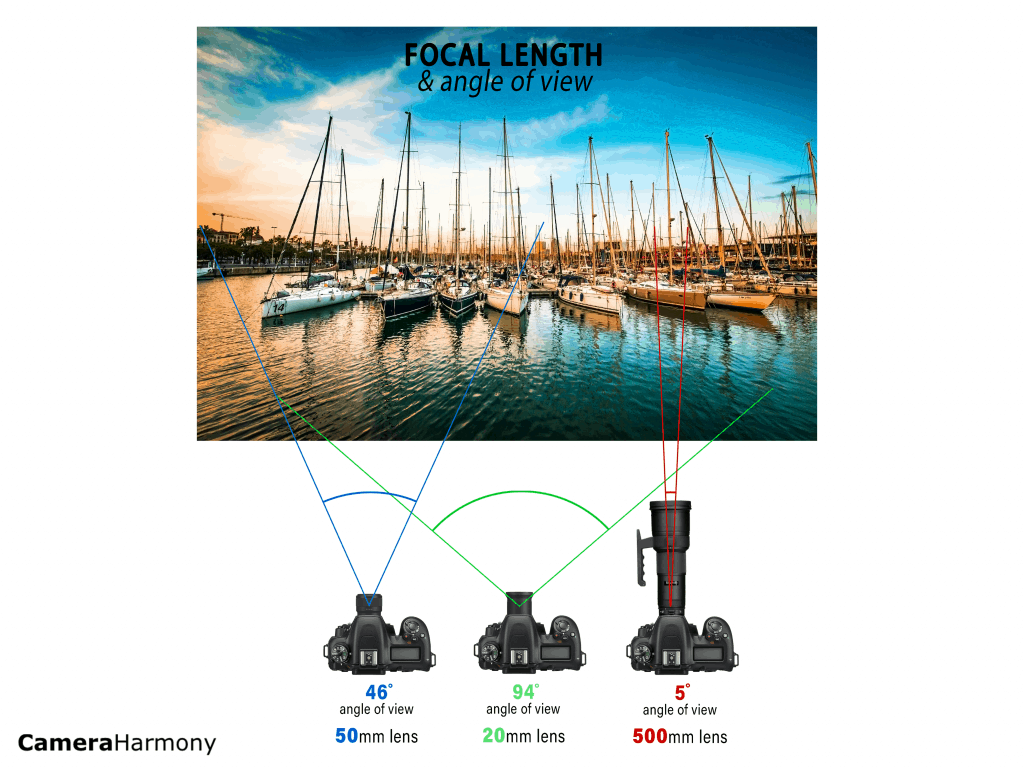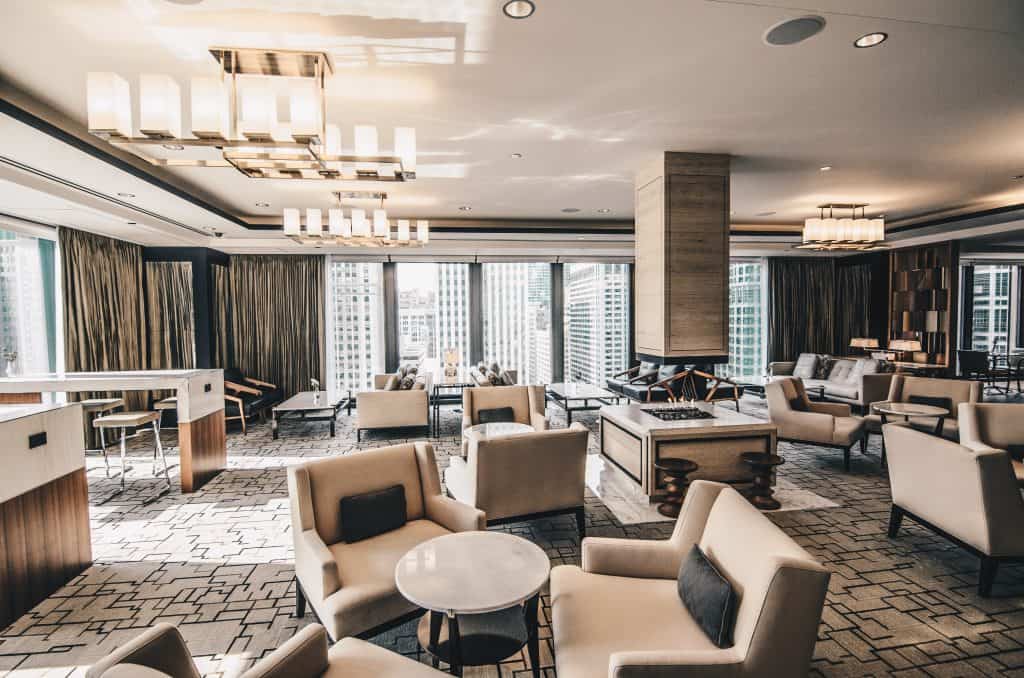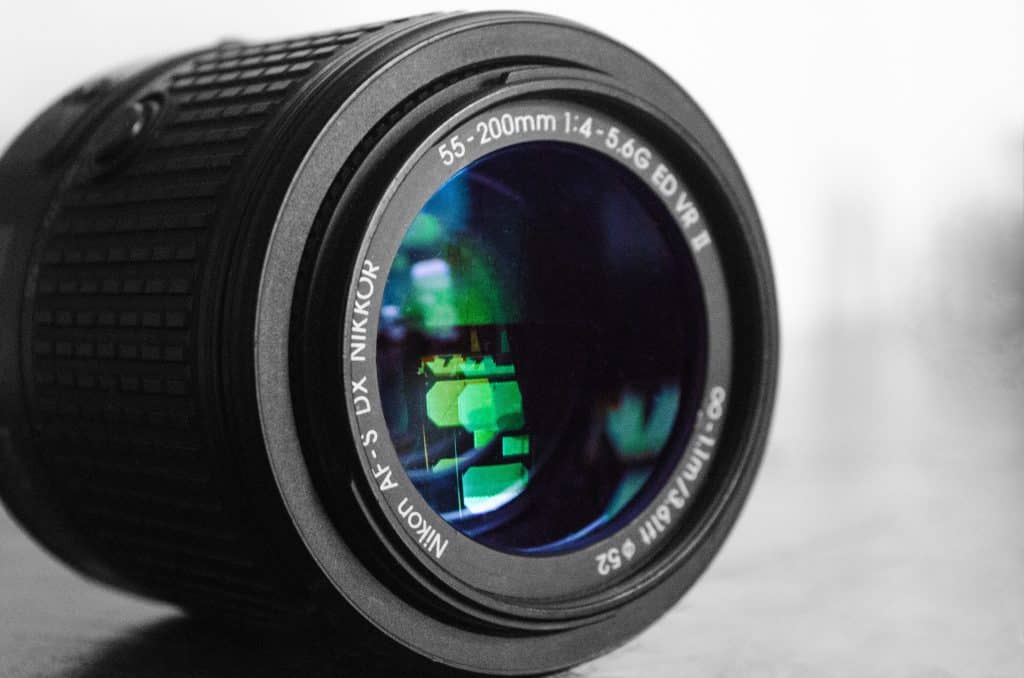The lens is what gives your image its final appearance. Although the camera houses the sensor, the autofocus motor, and other vital working components – it plays a relatively minimal role in what your photograph looks like.
Your optics will affect perspective, field of view, and depth of field, all of which come down to the lens focal length – the little millimeter reading on the barrel!
In this guide, I will explain what focal length and camera zoom are, so you can understand how to use them to create stunning photos.
What is Focal Length?

The focal length is a lens description that tells you what angle of view and magnification you can capture. The angle of view is how much or how little you can see in your picture. For example, a wide field of view will show you more of the frame than a narrow field of view.
The focal length is denoted by -number- mm (millimeter) in both the name of the lens and on the lens itself. Contrary to popular belief, this length is not the physical size of the lens but rather the distance between your subject (or what you are photographing) and the point at which your camera can take a sharp photograph of the subject. So, the distance between your glass and its focus. That is why the same focal length between brands can have different lens sizes. For example, the 50mm lens can be a tiny and thin lens or a very long and bulky one.

The smaller the millimeter number (the shorter the focal length), the wider your field of view. The larger the millimeter number (which denotes that the focal length is longer), the more narrow your field of view.
The technical definition of focal length is a bit more complex than the above definition, but you don’t need to overcomplicate as a photographer. We are not lens engineers!
Because there are so many focal lengths, they are classified into different categories. These categories are (from the widest angle of view to the most narrow) ultra-wide angle lenses, wide angle lenses, standard lenses, telephoto lenses, and super telephoto lenses.

Ultra Wide Angle Lens [10mm to 24mm]

As the name suggests, these lenses have a very wide angle of view! Often used by real estate photographers and landscape photographers, these lenses can make small rooms look large and take the full epic landscape view.
However, ultra-wide angle lenses require the glass to be curved to capture such a wide view and as a result, can cause a fishbowl effect when photographing something too close to the glass. Some love this look and have come to make the fisheye lens popular!
Wide Angle Lens [24mm to 35mm]

Wide-angle lenses are not quite as wide as the ultra wides but are still quite wide. Why these lenses may be favored over the ultras is due to their reduced distortion – the glass isn’t as curved!
Wide-angle lenses are used a lot by family photographers capturing large groups and by real estate and landscape photographers looking for something with less distortion.
Wide-angle lenses have the advantage of a close focusing distance, which means that the subject can be very close to the glass, and the lens can still focus sharply.
Standard Lens [35mm to 70mm]

Standard lenses are amongst the easiest ones to work with because they feature no distortion (the glass is flat). Standard lenses are the closest to the human eye and what you see, which makes these millimeters popular choices for new photographers (much easier to photograph when you don’t need to account for perspective distortion problems).
Standard lenses are incredibly versatile and are used for all kinds of photography. These lenses are also commonly seen with wide apertures. This allows photographers to isolate the subject from the background by blurring the background away.
Telephoto Lens [70mm to 300mm]

Telephoto lenses are long lenses that can remind you of a bit of a telescope. These lenses can zoom you very close to your subject! Used most by animal and sports photographers, telephoto lenses allow you to sit far back and capture subjects as if right next to them.
However, these do not have close focusing distances and require you to sit a reasonable distance from your subject. These lenses are also quite large, so be prepared for an arm workout.
Technically telephoto lenses are distortion lenses, but not in the way you may think. They do not distort the proportions of your subject. The distortion is the fact that you can zoom in closer than your eye can see naturally.
Super Telephoto Lens [300mm and beyond]

Super telephoto lenses can zoom to extreme lengths of 300mm and beyond. These are epic for wildlife photographers that capture dangerous animals, such as big cats and bears. Wildlife photographers that capture birds high up in the trees also favor the super telephoto.
However, these are the most expensive and heavy lenses on the market and often need a monopod or tripod (you won’t be able to handhold them for very long!).
Focal Length and Camera Shake
There is another factor to consider when using longer focal lengths that most don’t think about until faced with such a problem. Image shake describes the blurriness or shakiness you may see in your photograph. This happens because of the vibration caused by clicking on the camera’s shutter button to capture an image. Longer focal lengths, such as telephoto lenses, are prone to this problem.
This is why buying a lens with an image stabilization system is a good idea! Each camera brand has its own version of an image stabilization system, so their lenses are denoted differently. Canon adds “IS” to the end of the lens names to specify that this system exists in the lens, Nikon adds “VR,” Sony adds “OSS,” and so forth.
Although each brand has its patented stabilization technology, generally speaking, this system works because the components are set on a gimbal inside the lens that counteracts any movement – keeping all of the elements at level.
To prove how much of a problem camera shake is for longer focal lengths, you’ll usually only see a stabilization option in longer lengths. Shorter lengths don’t tend to have this feature because it isn’t really necessary.
Pros and Cons of Variable Focal Lengths

Variable focal length is a fancy term for lenses that can zoom. These lenses can adjust their focal length by turning the zooming ring on the barrel. These lenses are very popular amongst photographers due to their versatility!
Variable focal lengths, such as the 70mm – 200mm lens, will be denoted by their minimum and maximum zoom. Its widest point is 70mm, and its narrowest is 200mm.
Zoom lenses offer a lot of adaptability due to being able to adjust the frame by simply zooming in and out, preventing you from needing to move physically. These lenses can change their focal length in a split second, allowing you to capture spontaneous moments. Zoom lenses are great for traveling because you’ll only need one lens on vacation.
However, they do have their downsides. Unfortunately, due to the zooming mechanism required to make the lens work, sometimes features are sacrificed to accommodate this. One such feature is very wide apertures. Zoom lenses have the widest aperture point of f/2.8, which is relatively shallow but not as shallow as f/1.8. This also increases the price tag exponentially.
Zoom lenses may not always be as sharp as lenses that cannot zoom and often have softness around the picture’s edges. This isn’t a big deal to most, but it is something to remember.
Zoom lenses can also be much larger and heavier to accommodate the zooming mechanism.
Pros and Cons of Fixed Focal Lengths

Fixed focal lengths, also called prime lenses, do not zoom. The focal length they are set to cannot change. Newer photographs find the idea of a lens that cannot zoom odd and impractical, but prime lenses are prevalent in the industry for a reason!
Fixed lenses’ benefits are their sharpness, quality, and wide apertures. Because prime lenses do not zoom, their barrels aren’t over-encumbered with zooming mechanisms. The lens is perfectly built for its exact focal length. As such, these lenses tend to be exponentially sharper than lenses that zoom! This also allows the lens engineers to focus on other key features (such as aperture) rather than ensuring the zooming barrel works well.
Fixed lenses have much wider apertures than zoom lenses. As mentioned in the Aperture Explained article, wide apertures lend a hand in photographing in very low light and producing beautiful shallow depths of field. Generally speaking, variable focal lengths can only hold an aperture at a width of 2.8 at its widest, while fixed focal lengths can go down as low as f/0.95!

Because there is no zooming mechanism, these lenses have the potential to be lighter and smaller than variable focal length lenses.
The downsides of fixed lenses are their lack of versatility and cost. Because the focal length cannot change, you have to move to alter the composition physically. This can sometimes be a burden depending on what you’re photographing. Prime lenses can also be more expensive than zoom lenses due to their overall increase in quality.
How Does the Sensor Size of Your Camera Affect Focal Length?
As if focal lengths weren’t made up of enough components, your camera’s sensor size plays a role too. Generally, cameras come in two sensor sizes: full frame camera or crop sensor camera (marked as APS-C). As such, lenses also come in two types: full frame and APS-C.
Crop sensor, as the name implies, crops your field of view because the sensor is smaller. So as you can imagine, the two lens types correlate with the two camera sensor sizes. However, you can use a full-frame lens on a crop-sensor camera just fine (but you cannot use a crop-sensor lens on a full-frame camera because the sensor is too big).
How this pertains to focal length is if you use a full frame lens on a crop sensor camera, your focal length will change. Focal length measurement is based on a 35mm field of view. If you’re using an APS-C camera, you’re cropping out the edges of that frame. As such, your full-frame lens will now have its focal length cropped.
How much is cropped depends on the crop sensor’s ‘multiplier,’ which can differ between brands. How this works is that you take the full frame focal length (for example, a 50mm standard lens) and multiply it by the multiplier (for Nikon crop sensors, the multiplier is 1.5x), which produces the focal length a crop sensor will capture (in this case, 75mm).
What Lenses Should You Have?
All of them, of course!
Just kidding, finances will often stifle your pursuit of many lenses. However, if you are to ask the experts, the correct answer to this question would be at least one of each focal length type. One ultra wide angle, one wide angle, one standard, and so on. This is because one lens cannot do it all.
Equally, having at least one fixed lens with a wide aperture can be vital, and at least one zoom lens with a long-range gives you flexibility.
If you have to settle on just one lens, pick the one that would work for the majority of photo shoots that you do daily.
Conclusion
The focal length you settle upon for each photo shoot will directly affect how you photograph and your personal aesthetic.
Some like the cool perspective distortion caused by wide-angle lenses, so they will capture their subjects with this angle in mind!
Others like everything to look similar to the human eye so standard lenses will be their choice.
Wildlife photographers capture animals with telephoto lenses, requiring them to sit further away from the subject and sneak around with their big lenses.
Whatever lens, or lenses, you settle upon will define you as a photographer!
